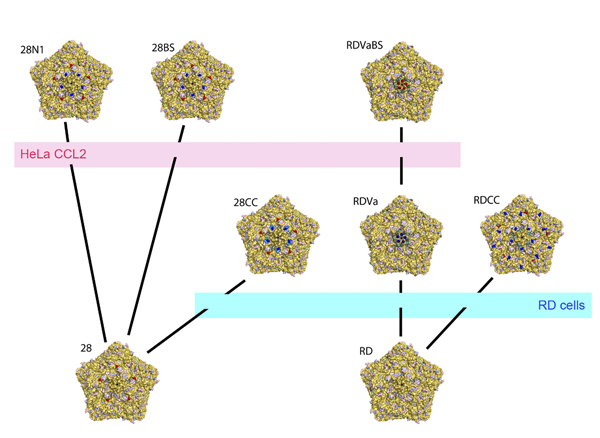These mutant viruses originated from the CVB3/28 and CVB3/RD strains. CVB3/RDVa arose from chronically infected RD cells and was isolated when enhanced cytopathic effect (CPE) was noticed (J. Virol. 85:3306-3314). CVB3/28 produces less CPE in HeLa CCL2 cells than in lab strains of HeLa cells (J. Med. Virol. 85:677-683). CVB3/28BS and CVB3/RDVaBS were isolated after repeated passes of virus through HeLa CCL2 cells resulted in enhanced CPE. CVB3/28CC and CVB3/RDCC were isolated from chronically infected RD cells (carrier cultures). CVB3/28N1 was selected for stability at 37C by repeated infection of HeLa CCL2 cells, followed by incubation of culture supernatants at 37C for one or more days, and reinfection of HeLa CCL2 until the virus progeny lost minimal titer during the incubation. Stability and capsid diffrences for CVB3/28BS, /28CC, and /28N have been reported (J. Gen. Virol. 97:60-68). CVB3/28N (half-life at 37C is 17hr) differs from CVB3/28 (half-life at 37C is 7hr) in only three of the capsid protein amino acids. The published results show that CVB3/28 is one of very few enteroviruses with leucine at residue 92 of Vp1, and that mutation of the leucine to valine is able to stabilize the virus (half-life is 17hr).
